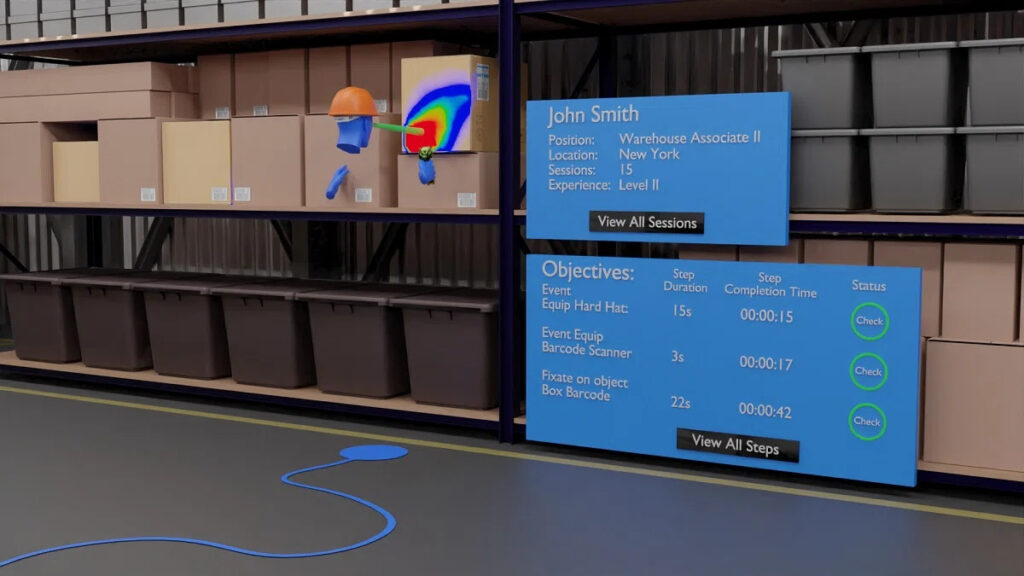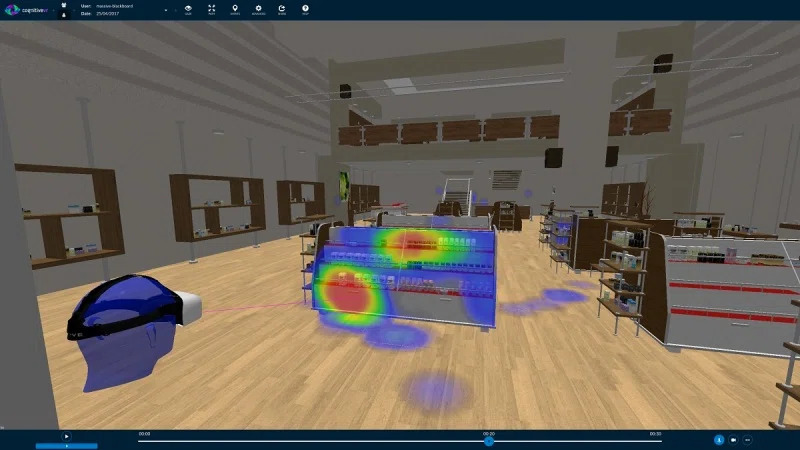Cognitive3D has raised $2.5 million to develop spatial analytics for immersive 3D environments such as virtual reality and the metaverse.
Cognitive3D uses immersive technology to help provide a new way of researching consumer behavior within a 3D extended reality (XR) setting. As users move from content consumption through 2D web and mobile platforms, towards a more interactive content participation in 3D apps, Cognitive3D provides the ability to understand what happens within a 3D space, including how users interact with objects in the chosen environment. That means devs will know where you are looking inside a VR environment.
Konvoy led the round, with participation from Space Capital and Boost VC. Jim Preston, lead technical producer at Electronic Arts and Konvoy principal Taylor Hurst will join Cognitive3D’s board.
With user experiences and metrics changing through the advancement of 3D apps, traditional analytics tools are becoming less efficient as organizations are struggling to gain important user insights within XR environments. As a result, Cognitive3D identified an opportunity through collecting spatial intelligence by leveraging virtual, augmented, and mixed reality devices as means for data collection.
“The interest and use of 3D applications is on the rise as it creates a simulated environment that can fully immerse users and be easily adapted and improved,” said CEO Tony Bevilacqua, in a statement. “As with all platforms there needs to be a way of assessing its effectiveness and efficiency, and this is where Cognitive3D’s innovative and unique methods come in. Our way of testing and assessing user experiences within 3D environments allows those building and creating them the ability to see what works and how
their applications can be enhanced.”
This approach of using spatial analytics to carry out user research and collate essential data enables organizations to understand consumer behavior through a unique quantitatively measured platform. This includes showing where users look and how they engage with the 3D environment; how they navigate and where they spend the most time; and specific events that happen, such as users taking off their headsets which could indicate that they got stuck in an immersive 3D experience.
Privacy issues

This made me think of a panel we did on ethics of the metaverse at our GamesBeat Summit: Into the Metaverse 2 event in January. In that session, ethics observers such as Kent Bye, who runs the Voices of VR Podcast, and Micaela Mantegna, an affiliate at the Berkman Kline Center for Internet and Society at Harvard University, wondered how privacy can be protected in XR and metaverse environments, where the ability to collect sensitive biometric information is much greater than with other platforms.
Asked about this, the company said that privacy and security are paramount for Cognitive3D because it recognizes that measuring how users interact within 3D spaces is different, and the stakes around data collection and user privacy are inherently higher than in prior computing platforms.
The company is rigorously following enterprise standards to ensure that its internal security practices are strong and externally audited, which includes engaging with vendors for SOC2 compliance who regularly carry out penetration testing from an outside vendor.
Over the last five years, Cognitive3D has worked with enterprises in training simulation, consumer research and academic research – each with clear paths to user consent above and beyond anonymized data collection from the public.
Cognitive3D holds itself accountable to the highest standards when it comes to security practices so that its customers can focus solely on building the best 3D applications, and is building out the XR Privacy Framework, which it aims to release before the end of year. This framework will provide a standard user consent mechanism, as well as the concept of ‘Do Not Track’ for the industry, which has been traditionally bypassed in the Web and Mobile spaces due to a lack of standardization.
It has recently launched a new privacy policy detailing how user data (including personal data) is collected, used, and disclosed. More information about privacy and security at Cognitive3D can be found here.
How it works
Through the launch of a freemium offering, the company is constructing industry standard benchmarks for application performance that evaluates telemetry from XR devices. These benchmarks provide baselines for a participant’s comfort, presence and performance, and provides insight into where developers should spend their time in app optimization, and how their app compares against other apps in their category.
Bevilacqua was previously cofounder and product leader of a company with a mobile analytics product in market, and received some early exposure to the Oculus devkits through regular attendance at the Game Development Conference (GDC).
“This exposure really opened my eyes to the world of potential in measuring 3D interactive environments,” Bevilacqua said in an email to GamesBeat. “At my prior company we were building a product in a hyper competitive market with well-funded incumbents, but more importantly, I didn’t feel like we were chasing innovation, we were chasing parity. With immersive technology, there was a greenfield opportunity to create and innovate on a new category of spatial analytics technology, leveraging the head-mounted display (HMD) as a vehicle for data collection. Ultimately that opportunity to innovate and build new ways of understanding how participants perceive the world around them that drove me to found Cognitive3D.”
Vancouver-based Cognitive3D was founded in 2015 by Bevilacqua, and since launching has built a team of nine, all based in Canada, with the aim of doubling the headcount over the next 18 months. The latest seed round brings Cognitive3D’s total funding amount to date to $3.5 million.
Taylor Hurst, Principal at Konvoy, adds: “Cognitive3D’s ability to collect and measure spatialdata to bring visibility to user participation, and help organizations optimize their games andapps is a game changer for all of those involved in creating immersive 3D environments.
From training simulations, to consumer and academic research, and entertainment, theadoption of immersive 3D applications is increasing exponentially, and Cognitive3D is poised to be the market leader in this new category of spatial analytics.”
Quelle:
Foto:
Cognitive3D can get analytics on where you’re looking in VR.Image Credit: Cognitive3D




